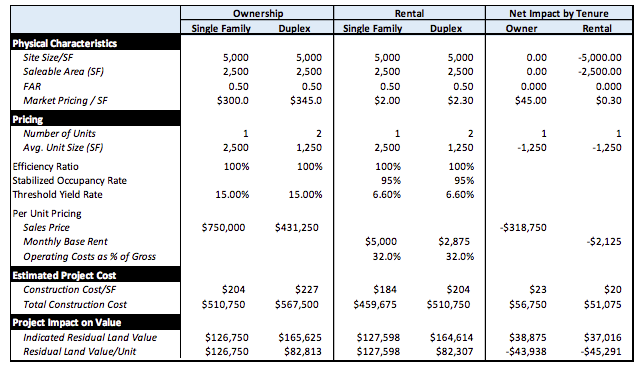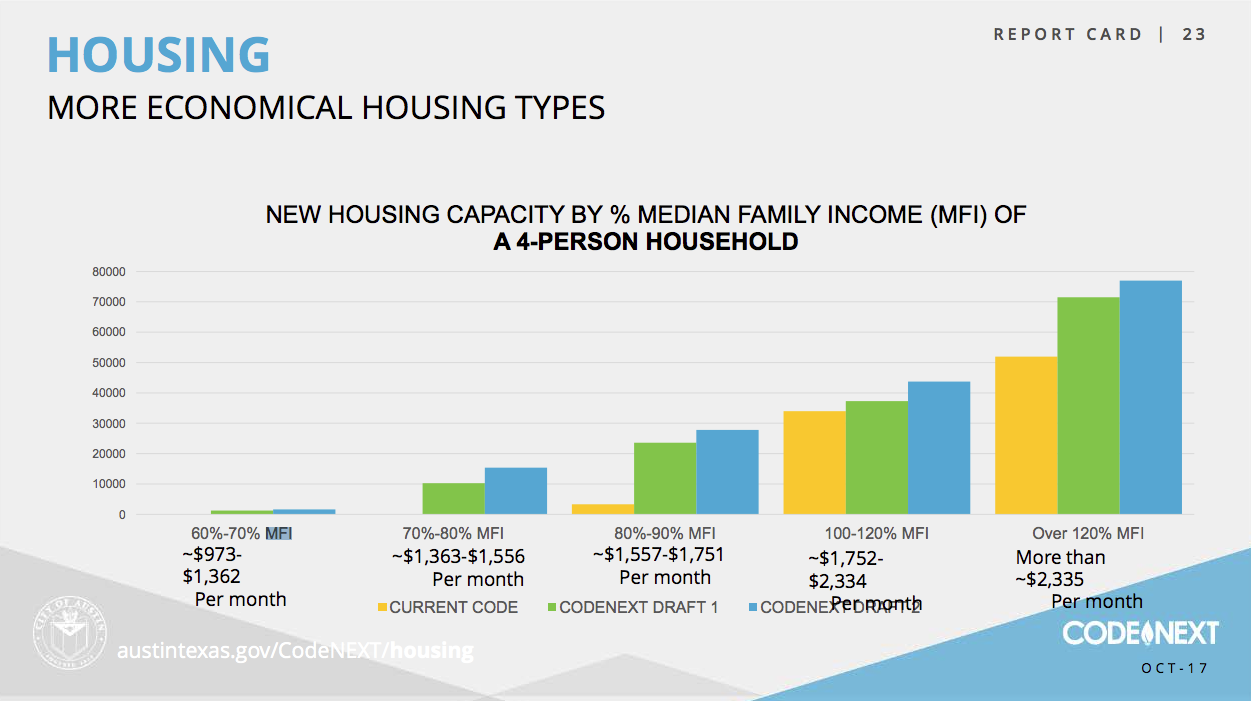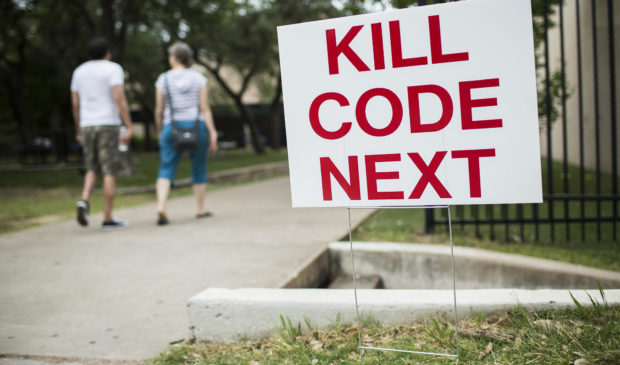We collected your CodeNEXT fears. And then tried to fact-check them.
Thursday, October 12, 2017 by
Audrey McGlinchy, KUT Nearly 100 people crammed into a back room of a South Austin lodge to hear Mayor Steve Adler tackle some boring stuff.
Made up mostly of members of the Bouldin Creek Neighborhood Association, the audience sat in cushioned beige chairs looking at times angry, confused and tired. When the seats were full, neighbors leaned against wooden poles and sat atop tables. They listened as residents lined up in front of a mic to air concerns about CodeNEXT, the city’s attempt to rewrite a 30-year-old Land Development Code.
“We live in a city that we love and we treasure because it has a really special spirit and soul to it,” Adler told the crowd. “Right now it’s endangered in this city. One piece of what we can do to change that or affect that is rewriting the Land Development Code.”
Scenes like this have been happening all over Austin since the city released a draft of the new code. KUT has been collecting the concerns expressed most often at these events. Below, we’ve tried to fact-check them.
Will there be fewer parking requirements in CodeNEXT?
Generally, yes. Right now, the city requires a minimum of two parking spots per housing unit. Under the proposed code, that would drop down to one.
But these are only required minimums. Scott Turner said developers like himself will still be free to build as many parking spots as they think people need.
“You let the market decide what (you’re) going to put in,” said Turner, who said he’ll likely continue building two spots per unit. He said fewer would require people to change their expectations about how to get around Austin.
“There may be a time at which one parking spot is perfectly fine for a house that someone lives in,” he said. “But as of today, that is not the case.”
How will CodeNEXT affect the rate of home demolition in Austin?
The code will likely encourage more demolition, said Jake Wegmann, assistant professor of housing and real estate at the University of Texas.
“It might happen faster,” he said. “Would it happen 10 times faster? I don’t think so.”
Wegmann said it’s an issue of demand. In Austin right now, it’s difficult to build anything between a single-family home and a large apartment building. With the new code, the city is trying to create opportunities for more housing to be built, as well as more types of housing – such as town homes, fourplexes and cottage apartments.
Demolition may follow demand for these types of houses, Wegmann said.
“If any developer were allowed to put up town houses practically in any neighborhood in Austin, they would sell quickly,” he said. If there’s demand for more denser housing and zoning changes suddenly allow it to be built, the value of that land rises.
If land is more valuable than the house sitting on it, it makes more sense for a developer to demolish and build something new.
But teardowns in Austin are already on the rise.
In 2016, the city approved 800 demolition permits. That’s been steadily increasing over time; since 2010, demolitions in the city have increased by 13 percent each year.
According to Fregonese Associates, CodeNEXT consultants hired by the city, the current rules for building could encourage the demolition of 7,000 housing units over time. That number rises under the proposed code to 10,500 units.
But what would we get with redevelopment? Under the current code, Fregonese estimates redeveloped land (new building in place of a demolished home) could create 26,100 new units. The new code could incentivize up to 68,700 units.
The concern is that builders will demolish affordable housing. City Council has asked staff to track these losses.
Does density equal affordability?
This one is complicated.
It’s a combination of land price, construction costs and number of units. How much does the land cost? How much does it cost to build? Wegmann said single-family homes, duplexes and town homes are generally cheaper to build; developers don’t have to deal with concrete parking garages or elevators, which are common in high-rise apartment buildings.
Portland, Oregon, is considering whether to increase the number of housing units it allows to be built on a plot of land. The city asked an economist to break down the land cost, construction cost and eventual rent of a single-family home versus a duplex. Here’s what it came up with:

Portland is a different city than Austin, though, and this doesn’t account for demand. If there’s a large demand for town homes, those could be sold for more. But generally, when land price is split up among units, the housing can be more affordable.
When researchers at the University of Southern California recently compared rental prices for different types of housing of the same age, they found that housing with anywhere from two to nine units tended to provide the cheapest rental housing.
But it’s important to define how much cheaper denser housing could be.
Ed Wendler, a builder who is part of a political campaign to stop CodeNEXT, agreed that units in a new duplex could sell for less than a new single-family home.
“If you build one house, it may be a million,” he said. “He builds four … they may pay $750,000 a piece. Is it less expensive? Yes. Is it affordable? No.”
Unsubsidized or market-rate housing will most likely never produce housing affordable for very low-income people. CodeNEXT consultants estimate new market-rate housing will be able to create only a minimal amount of housing affordable to a family of four making roughly $47,000 a year.

How will CodeNEXT affect displacement?
No one seems to know. But people are concerned.
At a recent meeting of East Austin residents, longtime activist Bertha Delgado shouted into a mic at Adler and Council Member Pio Renteria.
“What protections are you putting on East Austin to keep us here now?” she said. The area has been experiencing rapid gentrification over the past couple of decades.
Eric Tang, an associate professor in the African and African Diaspora Department at the University of Texas, said that while he can’t say exactly what effect CodeNEXT will have on displacing people, communities of color have more reasons to be suspicious.
“Communities of color have historically been given the short end of major redevelopment or master planning rezoning efforts,” he said.
In 1928, a master plan cut off public services to black residents living west of what is now Interstate 35, confining black people to one part of town. Throughout the middle of the 20th century, urban renewal programs demolished many black residences in the name of clearing “slums.”
While a new Land Development Code can’t directly tackle anti-displacement policies, Tang said the city needs to be developing protections for low-income and longtime residents at the same time.
“Is it an entirely separate discussion? Maybe. But is it one that falls outside the purview of the city of Austin? No. I think we could take a look at what our peer cities are doing,” he said. Portland, for example, has adopted a “right to return” program where current and former residents get first dibs on new affordable housing in their neighborhoods.
“If you’ve lived in these historic neighborhoods that have been gentrified, then we’re going to work with you to figure out how you can be in a position to get into affordable housing in those neighborhoods when they become available,” Tang said. “You will be prioritized.”
CodeWHEN?
Council is scheduled to vote on a new code this spring, but some members want to slow the process until residents better understand what these changes could mean.
Council Member Leslie Pool suggested extending the CodeNEXT deadline by several months.
“I would ask that we consider adjusting our current timeline and adopt a new goalpost, such as Winter 2018, Spring 2019, or another timeframe that Council finds acceptable,” Pool wrote on the City Council Message Board Monday.
In addition, the most recent meeting of the Planning Commission hinted at an extended deadline and several citizen campaigns may also derail the process, including a call to put CodeNEXT to a public vote.
Curious about how we got here? Check out the Austin Monitor’s CodeNEXT Timeline.
This story was produced as part of the Austin Monitor’s reporting partnership with KUT. Photo: A sign outside a forum on CodeNEXT at Anderson High School in April. Martin do Nascimento/KUT.
The Austin Monitor’s work is made possible by donations from the community. Though our reporting covers donors from time to time, we are careful to keep business and editorial efforts separate while maintaining transparency. A complete list of donors is available here, and our code of ethics is explained here.
You're a community leader
And we’re honored you look to us for serious, in-depth news. You know a strong community needs local and dedicated watchdog reporting. We’re here for you and that won’t change. Now will you take the powerful next step and support our nonprofit news organization?











